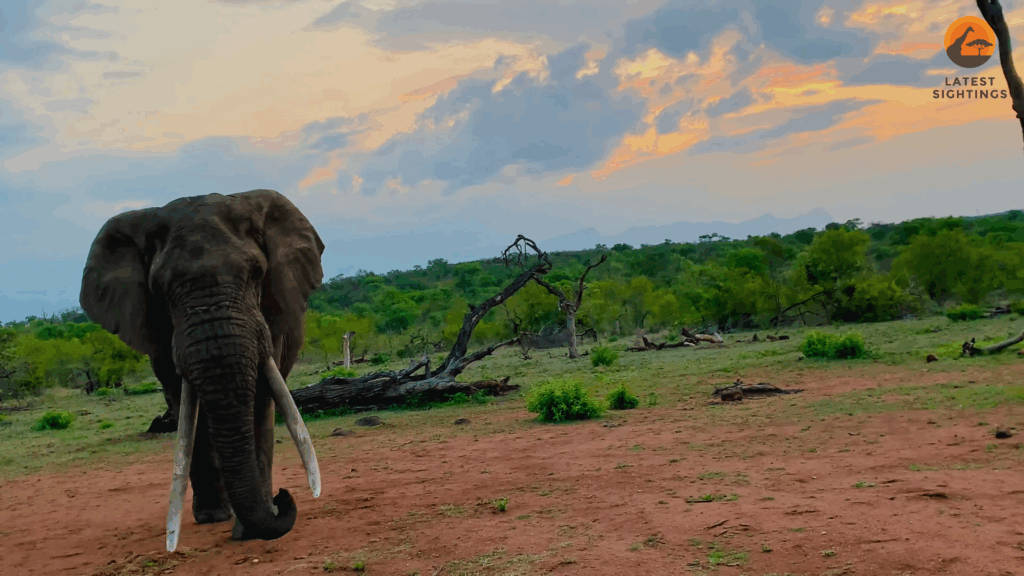
Anton Lategan submitted this intimate video to Latest Sightings. The footage was filmed on the Pridelands Conservancy, Greater Kruger National Park, South Africa.
Tusker approaches
As the video begins, we are met with a glorious sight. Against the backdrop of lush vegetation and the sun setting over the Drakensberg Mountains, an elephant approaches.

But this is no ordinary elephant. It is one of a shrinking population of large tuskers, known as Ezulwini. His name means “heaven”.
Elder statesmen
Elephant bulls can grow to a ripe old age of 70, and this big guy is thought to be 45-50 years old. This means, he is in his prime.

At this age, he will weigh close to 6 tons and stand over three metres high at the shoulder. Despite this massive bulk, he moves in near-silence, the picture of supreme confidence.
As he ambles closer to the camera, we have the opportunity to appreciate the species in detail.
Terrific tusks
This big fella’s most notable feature is his tusks. Elephants use their tusks, actually lengthened incisors, as powerful tools and formidable weapons.

Note that one tusk is longer than the other. Just as humans have a dominant hand, elephants have a dominant tusk, which they prefer to use.
As a result, it wears down faster. You’ll also notice the tip of his right tusk is broken, possibly from a fight.
Ears for Africa
Some say an elephant’s ears approximate the shape of Africa. Whatever your thoughts, they are another striking feature with various uses.
Elephant ears contain a network of veins close to the surface of the skin. When the elephant flaps its ears, this aids in cooling them down.

Their ears tell us a lot about their state of mind. When calm, they let their ears flap loosely. But when agitated, they flare them outward to appear larger and intimidate opponents.
Twisty trunk
Another standout feature of the elephant is its trunk. By fusing its nose and upper lip, the elephant creates a powerful appendage made up of around 50,000 muscles.

It takes a young elephant about two years to master its various uses. Elephants use their trunks to gather food, draw water, comfort one another, as a weapon and to communicate (both verbally and non-verbally).

Get our Best Sightings as they Come in
Rough skin
An elephant’s skin is very thick, sparsely haired, and very wrinkly. It is surprisingly sensitive to touch and temperature fluctuations.

Since elephants lack sweat glands, the wrinkles help regulate their temperature by trapping moisture in the folds.

As the elephant passes the camera, he bumps into it, briefly causing a blackout, but causing no damage.
The tale of the tail
More than just a fly whisk, an elephant’s tail also tells us much about its state of mind. When relaxed, they sway gently, while when anxious, they are motionless.

And, adorably, elephant calves occasionally maintain contact with their mothers by holding their tails with their trunks.
Next time you see an elephant in the wild, be sure to spend some time appreciating all these features individually. No doubt you’ll agree that, combined, they make for a most impressive creature.
